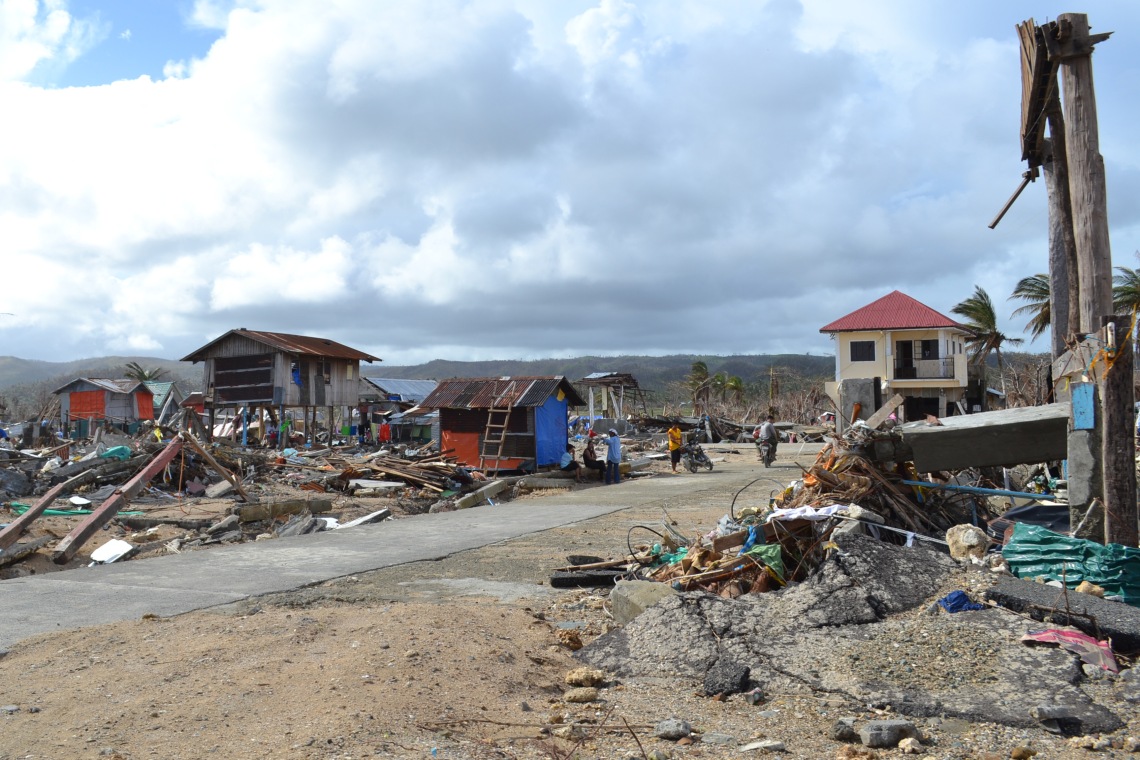Last week, Filipinos marked the first anniversary of the onslaught of super typhoon “Yolanda” (international name: Haiyan), which left more than 6,000 people dead when it struck the country in November 8, 2013. For our website’s special site, I recalled how our three-man team visited the different towns in Samar, which were affected by the typhoon.

Day 1 and 2: The new norm
Our three-person INQUIRER.net team left Manila on November 19 and reached Matnog port in Sorsogon the next day.
Expecting a long line of vehicles waiting to board roll-on/roll-off (RoRo) ships, we were surprised to find the roads clear. The port congestion caused by the massive pouring in of aid had already eased, after more ferries and ramps were deployed.
Travel was rough mid-way to Samar island, heavy rainfall pummeling the ship as it thrashed against large waves. Only an hour away, however, was the sunny and picturesque town of Allen in Northern Samar.
Read more: http://www.inquirer.net/142332/day-1-and-2-the-new-norm
Day 3: Tale of two towns
Reaching the eastern coast of the island, we began to see the effects of Supertyphoon Yolanda. Instead of the lush forest in the mountainous area we passed earlier, the trees near the coast looked lifeless, not a single leaf left. Even the mangroves weren’t spared as some were swept inland by the storm surge. Slabs of asphalt littered the sandy dirt-roads.
We drove in silence. Based on the trail of devastation alone, it was clear that Yolanda was something the country had never seen before.
Read more: http://www.inquirer.net/142353/day-3-tale-of-two-towns
Day 4: Forsaken land
It was definitely not part of our plan but we picked up a hitchhiker, a 69-year-old man in Salcedo, 16 kilometers away from Guiuan.
Mang Antonio was hoping to reach Tacloban, then Ormoc City, to catch a ferry to Davao where his other relatives lived.
We almost missed him, if not for a group of children who shouted and gestured at us to stop.
Picking up a hitchhiker seemed like a risk, but with no other vehicle in sight, the team decided to make room for another passenger.
Read more: http://www.inquirer.net/142414/day-4-forsaken-land
Day 5: War zone
Residents were opening up their makeshift shops, selling lechon (roasted pig), cigarettes and toiletries.
Lechon may be the last thing you would think of in a place like Tacloban, but with bodies still floating at sea, buying fish was out of the question.
Some of the men we talked to admitted to looting the items they were selling from factories or stores across the city. Others bought noodles at exorbitant prices from Catbalogan.
